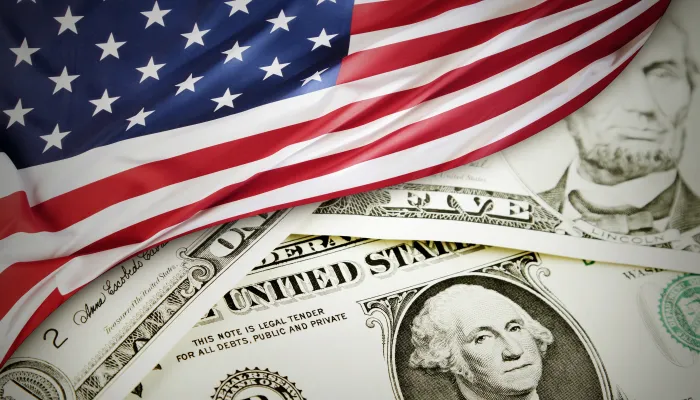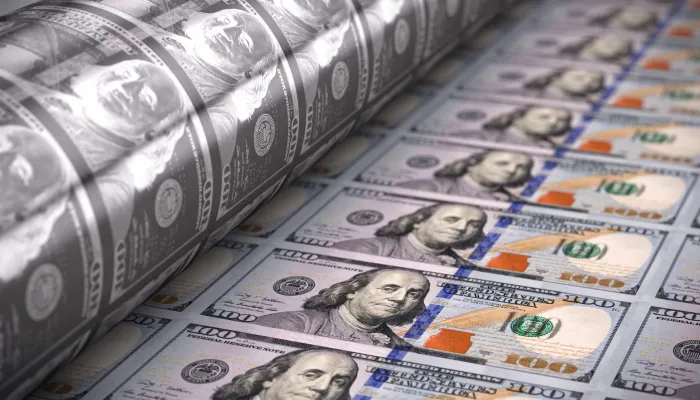Update: The Cost of Rising Interest Rates
Over the next decade, interest payments on the debt are projected to be the fastest growing part of the federal budget.
Last year, the federal government spent $241 billion – roughly 1.3 percent of Gross Domestic Product (GDP) – on interest payments. That’s among the lowest at any point since the 1970s, driven by historically low interest rates.
Yet recent market activity and Federal Reserve actions already suggest interest rates will rise; yields on the 3-month Treasury bill doubled in the past 5 months, while yields on the 10-year Treasury note rose 50 percent.
In combination with rising debt levels, this increase in rates will lead interest payments to grow rapidly. Under current law, the Congressional Budget Office (CBO) projects interest payments to nearly triple in nominal dollars and double as a percent of GDP – from $270 billion and 1.4 percent of GDP in Fiscal Year (FY) 2017 to $768 billion and 2.7 percent of GDP by FY 2027.
As these costs rise, interest spending threatens to crowd out other important priorities. Meanwhile, our high level of debt puts the country’s finances at substantial risk if interest rates rise even further than expected. Policies that reduce revenue or increase spending would worsen this situation further.
To mitigate the costs and risks of rising interest rates, policymakers should enact a plan or plans designed to gradually reduce the debt as a share of GDP.
The Current Costs of Interest on the Debt
Last year, the federal government spent $241 billion on net to service roughly $14 trillion of debt – meaning it paid an average interest rate of less than 2 percent. Even at today’s exceptionally low interest rates, this is more than we spent on the Departments of Homeland Security and Veterans Affairs combined. It is also more than our combined spending on the Departments of Education, Labor, Housing and Urban Development, and Transportation.
Every dollar the United States devotes to interest payments is a dollar spent that does not fund national priorities or that must be financed through higher taxes or debt. Over time, interest costs will consume a rising share of the budget.
Projections of Interest on the Debt
Over the past 20 years, interest rates have averaged 3.9 percent on 10-year notes and 2.2 percent on 3-month bills. By comparison, in FY 2016 they averaged 1.9 percent and 0.25 percent, respectively. In FY 2017, CBO projects them to average 2.2 and 0.6 percent, respectively.
CBO does not expect interest rates to return to their historic levels any time soon – but it does project they will rise substantially from today’s near-record lows. By the early 2020s, CBO projects 10-year notes to pay 3.6 percent in interest and 3-month bills to pay 2.8 percent.
As interest rates rise and debt held by the public grows from $14.35 trillion today to $24.9 trillion by 2027, CBO expects spending on debt service to increase significantly. Because of these factors, interest payments will rise.
Under current law – assuming no changes in policy – CBO projects that from FY 2017:
- In nominal dollars, net interest costs will double by FY 2023 and almost triple by FY 2027, growing from $270 billion this year to $550 billion and $768 billion, respectively.
- As a share of the economy, federal interest payments are expected to nearly double in 10 years, from 1.4 to 2.7 percent of GDP.
- The annual budget deficit will rise from $559 billion in FY 2017 to $1.4 trillion in FY 2027. Roughly three-fifths of this can be explained by the nearly $500 billion rise in interest payments.
- By FY 2024, interest payments will surpass how much the government spends on all of its investments, including research and development, education, training, and infrastructure1. By FY 2027, interest payments will exceed defense costs.
- Over the long term, interest costs will grow from 1.4 percent of GDP today to 3.8 percent in two decades and 6.3 percent in four decades.
Importantly, while interest costs are already the fastest growing part of the budget under current law, they would grow much faster if policymakers further add to the debt. Additional borrowing beyond current law would both increase the amount of debt the government pays interest on and put upward pressure on interest rates themselves2. Pro-growth deficit-financed policies – such as corporate tax reform or infrastructure investment – can put even more upward pressure on interest rates.
What if Interest Rates Differ from Projections?
CBO expects interest rates to rise, but not to their pre-recession levels. As a result of slower labor force and productivity growth, growing income inequality, and other factors, CBO projects rates (on an inflation-adjusted basis) will be over one and a half percentage points lower than the average between 1990 and 2007. If interest rates differ from CBO’s projections in either direction, the budgetary implications could be significant.
CBO estimates that if (in isolation) interest rates were 1 percentage point higher annually than projected through 2027 – a level that would still be less than the pre-recession average – debt would be $1.7 trillion higher, or 6 percent of GDP, higher. This suggests that if interest rates were to return to roughly their pre-recession averages, debt would be about $2.8 trillion higher3, or 10 percent of GDP.
On the other hand if interest rates are lower than projected, debt will decline.
We previously estimated the impact of a number of other changes in interest rates on the size of the federal debt. While we have not re-estimated these costs, we expect them to be similar in magnitude for the amount of interest rate change.
Were interest rates to remain no more than a percentage point below CBO’s projections, based on those projections, debt by 2027 would be about $1.6 trillion lower than projected.
Conclusion
Even with today’s low interest rates, deficits have risen off their post-recession lows, are already large, and are projected to rise further over the next decade. As debt continues to grow and interest rates return to more normal levels, interest spending is slated to be the fastest growing part of the budget and will ultimately crowd out other important priorities. Adding to the debt, even for worthwhile policy changes, would only accelerate the growth in interest costs.
There is an argument for some borrowing at today’s low interest rates so long as that borrowing is accompanied by a plan to pay down the new debt over the next few years before interest rates rise. There is also an argument for the Treasury to modify its debt management strategy – for example by lengthening average maturity – in order to reduce future interest costs (particularly from an unexpected interest rate hike).
Ultimately, however, the best way to minimize the cost of rising interest rates and prevent against interest-rate risk is to enact a thoughtful mixture of tax and spending reforms that put the debt as a share of the economy on a clear downward path over the long run. Low interest rates have made the debt very manageable over the recent past, but as we have seen in recent months, interest rates have the ability to rise again quickly. It is important to be prepared.
1. Congressional Budget Office, January 2017 baseline and “Federal Investment,” December 2013.
2. For example, whereas interest spending would almost triple under current law, we previously estimated it could quadruple or even quintuple under President Trump’s $6 trillion campaign plans.
3. Increase in debt by 2027, of which about $2.7 trillion is from interest costs and the remainder from lower revenue (on net).
What's Next
-
Image

-
Image

-
Image
